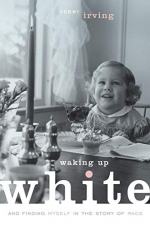
|
| Name: _________________________ | Period: ___________________ |
This quiz consists of 5 multiple choice and 5 short answer questions through Chapter 1: What Wasn't Said - Chapter 9: White Superiority.
Multiple Choice Questions
1. The activity at the end of Chapter 9: White Superiority asks readers to explain how they feel about which term?
(a) Beautiful.
(b) Systemic.
(c) Caucasian.
(d) Racist.
2. The activity at the end of Chapter 4: Optimism asks the reader to think about "major economic, political, demographic, and pop culture trends" (35) that occurred how many years before their birth, through the age of 20?
(a) 15.
(b) 20.
(c) 5.
(d) 10.
3. Irving describes her childhood neighborhood as being "almost exclusively" (24) what?
(a) Asian.
(b) White.
(c) Black.
(d) Latinx.
4. Irving recalls in Chapter 5: Within the Walls that in her childhood world, problems were deemed what?
(a) All-consuming.
(b) Permanent.
(c) Private.
(d) Incidental.
5. Irving uses an analogy in Chapter 8: Racial Categories that uses what physical attribute to stand in for race?
(a) Finger length.
(b) Eye color.
(c) Foot length.
(d) Hair color.
Short Answer Questions
1. What does the letter P stand for in the acronym WASP?
2. Which member of Irving's family is featured most prominently within the events of the memoir's first chapter?
3. At what age did Irving graduate from college, effectively ending the unexamined part of her life?
4. In Chapter 6: From Confusion to Shock, Irving describes moving to the city of Cambridge in which state after college?
5. What was the name of the film from which Irving learned about the GI Bill?
|
This section contains 236 words (approx. 1 page at 300 words per page) |

|




